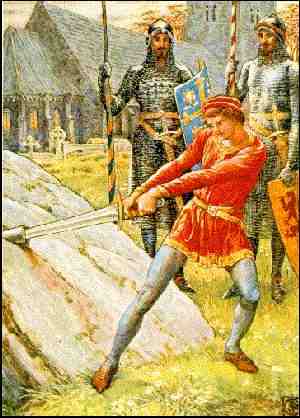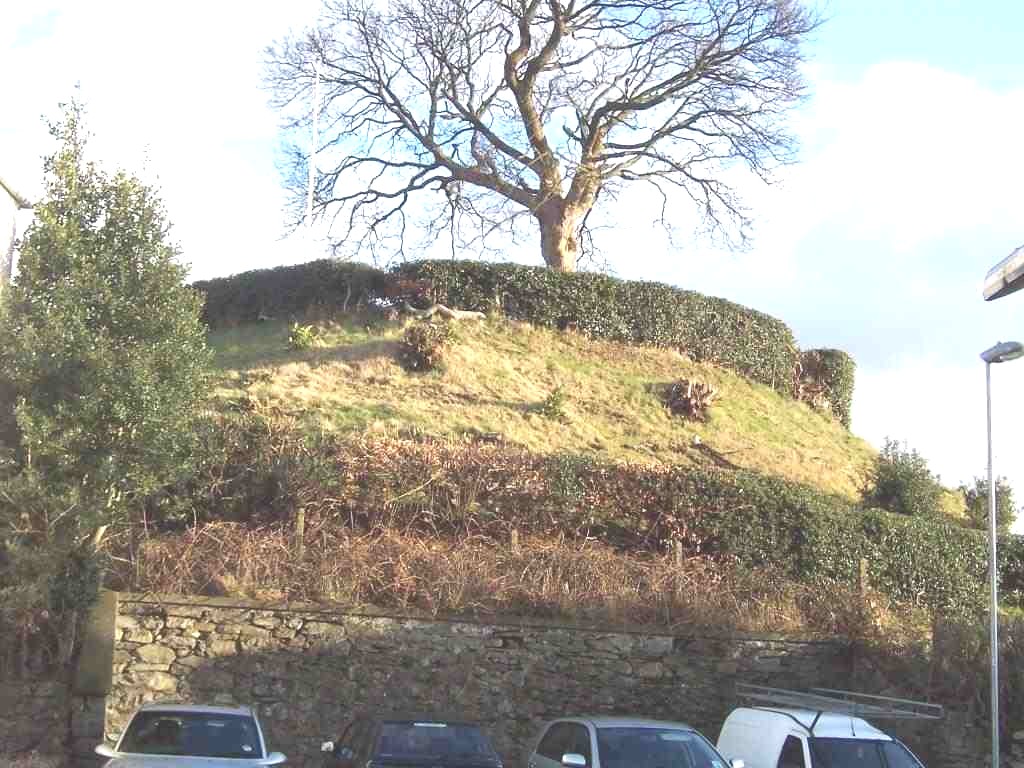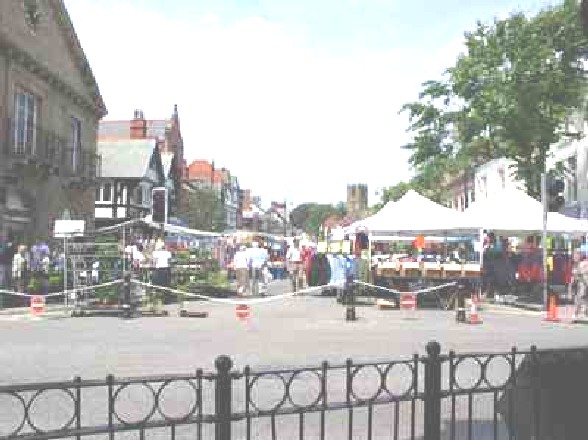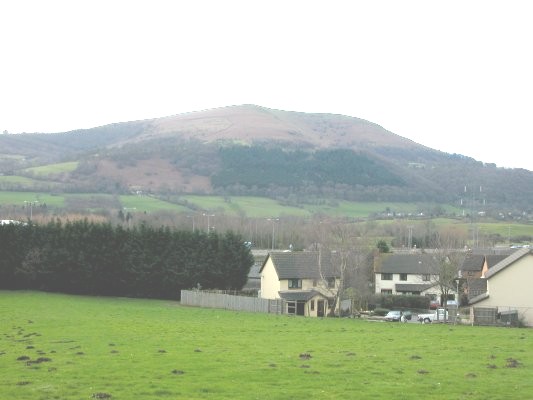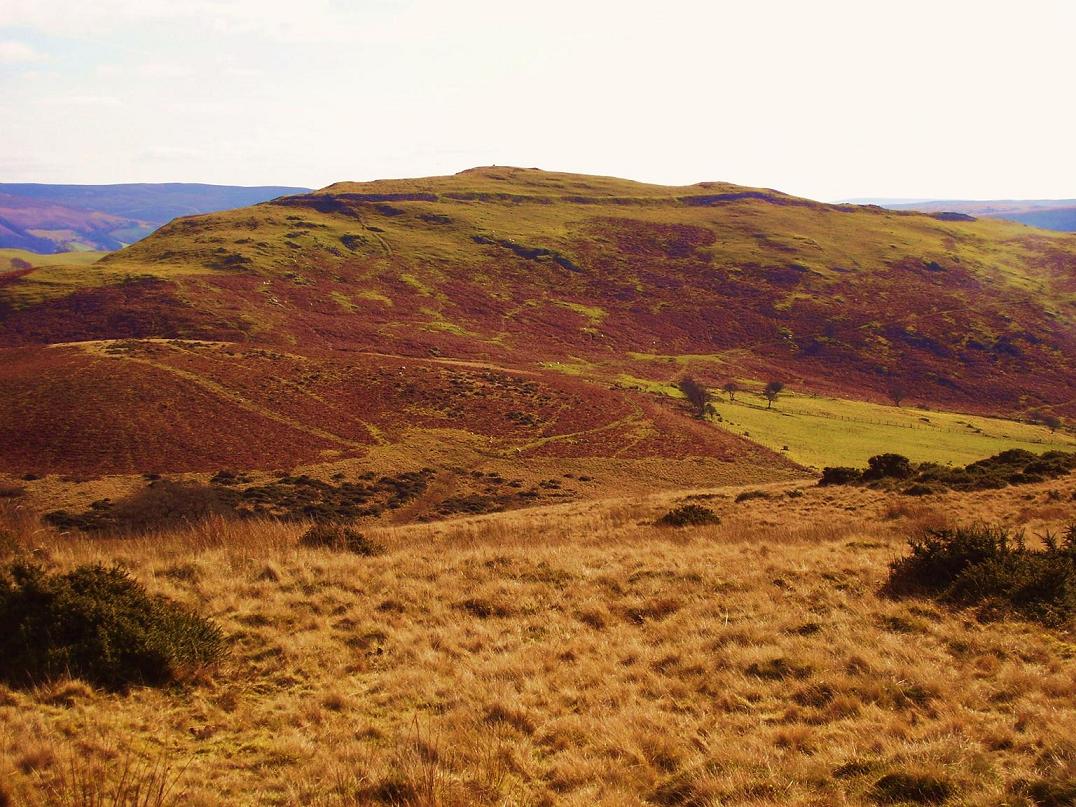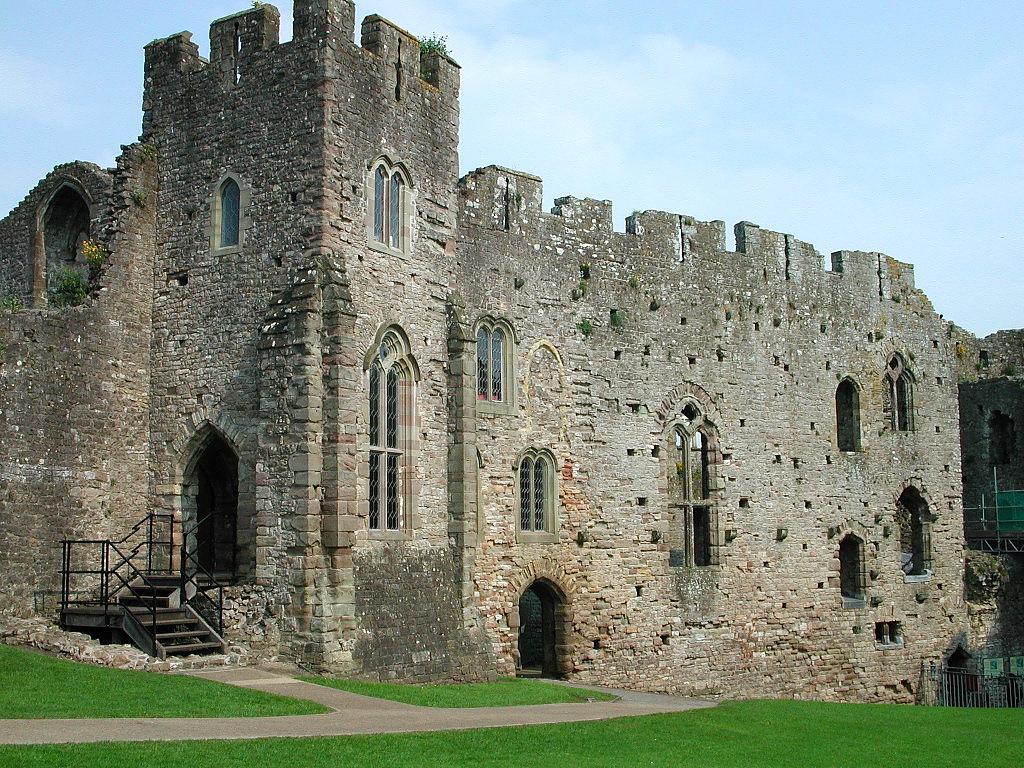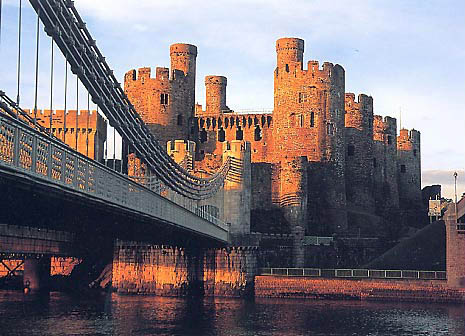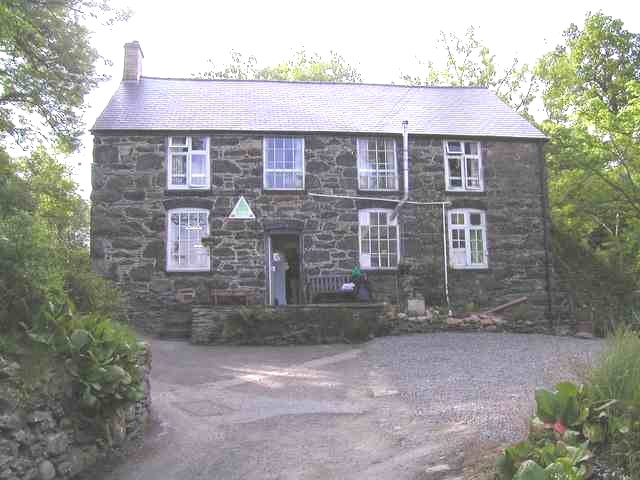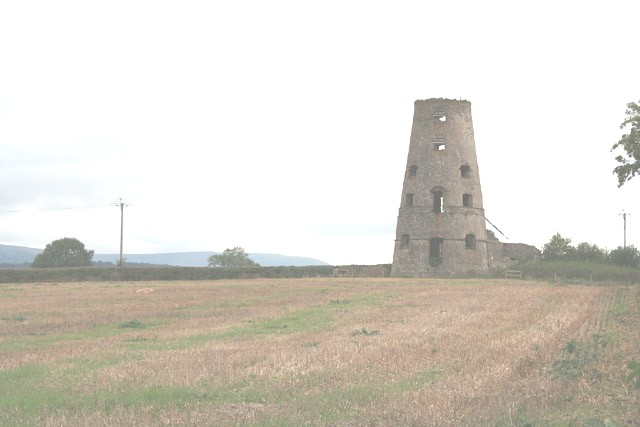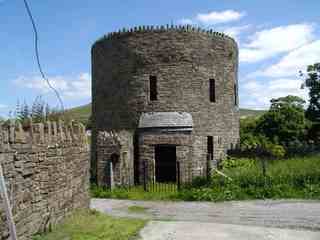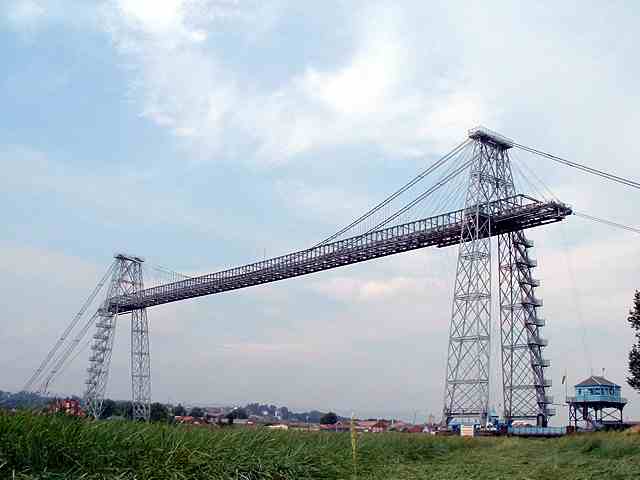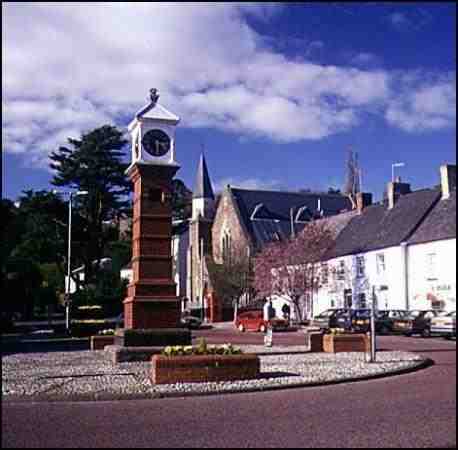Writings
of H P Blavatsky
Cardiff Theosophical Society in Wales
206 Newport Road, Cardiff, Wales, UK. CF24 -1DL
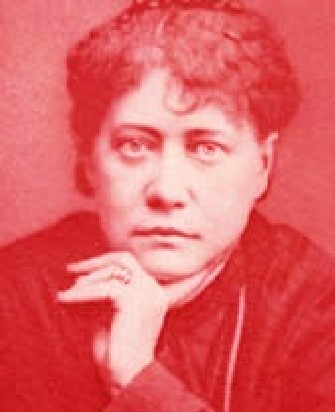
Helena Petrovna Blavatsky (1831 – 1891)
The Founder of Modern Theosophy
Ancient
Magic in
Modern
Science
By
H
P Blavatsky
PAULTHIER, the
French Indianist, may, or may not, be taxed with too much enthusiasm when
saying that India appears before him as the grand and primitive focus of human
thought, whose steady flame has ended by communicating itself to, and setting
on fire the whole ancient world1--yet, he is right in his statement. It is
Aryan metaphysics2 that have led the mind to occult knowledge--the oldest and
the mother science of all, since it contains within itself all the other
sciences. And it is occultism--the synthesis of all the discoveries in nature
and, chiefly, of the psychic potency within and beyond every physical atom of
matter--that has been the primitive bond that has cemented into one cornerstone
the foundations of all the religions of antiquity.
The primitive
spark has set on fire every nation, truly, and Magic underlies now every
national faith, whether old or young. Egypt and Chaldea are foremost in the
ranks of those countries that furnish us with the most evidence upon the
subject, helpless as they are to do as
Thus, magic in
every papyrus; magic in all the religious formulæ; magic bottled up in
hermetically-closed vials, many thousands of years old; magic in elegantly
bound, modern works; magic in the most popular novels; magic in social
gatherings; magic--worse than that, SORCERY--in the very air one breathes in
Europe, America, Australia: the more civilized and cultured a nation, the more
formidable and effective the effluvia of unconscious magic it emits and stores
away in the surrounding atmosphere . . .
Tabooed,
derided magic would, of course, never be accepted under her legitimate name;
yet science has begun dealing with that ostracised science under modern masks,
and very considerably. But what is in a name? Because a wolf is scientifically
defined as an animal of the genus canis, does it make of him a dog? Men of
science may prefer to call the magic inquired into by Porphyry and explained by
Iamblichus hysterical hypnosis, but that does not make it the less magic. The
result and outcome of primitive Revelation to the earlier races by their
"Divine Dynasties" the kings-instructors, became innate knowledge in
the Fourth race, that of the Atlanteans; and that knowledge is now called in
its rare cases of "abnormal" genuine manifestations, mediumship. The
secret history of the world, preserved only in far-away, secure retreats, would
alone, if told unreservedly, inform the present generations of the powers that
lie latent, and to most unknown, in man and nature. It was the fearful misuse
of magic by the Atlanteans, that led their race to utter destruction, and--to
oblivion. The tale of their sorcery and wicked enchantments has reached us,
through classical writers, in fragmentary bits, as legends and childish
fairy-tales, and as fathered on smaller nations. Thence the scorn for
necromancy, goëtic magic, and theurgy. The "witches" of
Still, nolens
volens, science has to take it in hand. Archæology in its most interesting
department--Egyptology and Assyriology--is fatally wedded to it, do what it
may. For magic is so mixed up with the world's history that, if the latter is
ever to be written at all in its completeness, giving the truth and nothing but
the truth, there seems to be no help for it. If Archæology counts still-upon
discoveries and reports upon hieratic writings that will be free from the
hateful subject, then HISTORY will never be written, we fear.
One sympathises
profoundly with, and can well imagine, the embarrassing position of the various
savants and "F.R.S.'s" of Academicians and Orientalists. Forced to
decipher, translate and interpret old mouldy papyri, inscriptions on steles and
Babylonian rhombs, they find themselves at every moment face to face with
MAGIC! Votive offerings, carvings, hieroglyphics, incantations--the whole
paraphernalia of that hateful "superstition"--stare them in the eyes,
demand their attention, fill them with the most disagreeable perplexity. Only
think what must be their feelings in the following case in hand. An evidently
precious papyrus is exhumed. It is the post-mortem passport furnished to the
osirified soul3 of a just-translated Prince or even Pharaoh, written in red and
black characters by a learned and famous scribe, say of the IVth Dynasty, under
the supervision of an Egyptian Hierophant--a class considered in all the ages
and held by posterity as the most learned of the learned, among the ancient
sages and philosophers. The statements therein were written at the solemn hours
of the death and burial of a King-Hierophant, of a Pharaoh and ruler. The
purpose of the paper is the introduction of the "soul" to the awful
region of Amenti, before its judges, there where a lie is said to outweigh
every other crime. The Orientalist carries away the papyrus and devotes to its
interpretation days, perhaps weeks, of labour, only to find in it the following
statement: "In the XIIIth year and the second month of Schomoo, in the
28th day of the same, we, the first High-priest of Ammon, the king of the gods,
Penotman, the son of the delegate (or substitute)4 for the High-priest
Pion-ki-moan, and the scribe of the temple of Sosser-soo-khons and of the
Necropolis Bootegamonmoo, began to dress the late Prince Oozirmari Pionokha,
etc., etc., preparing him for eternity. When ready, the mummy was pleased to
arise and thank his servants, as also to accept a cover worked for him by the
hand of the "lady singer," Nefrelit Nimutha, gone into eternity the
year so and so--"some hundred years before!" The whole in
hieroglyphics.
This may be a
mistaken reading. There are dozens of papyri, though, well authenticated and
recording more curious readings and narratives than that corroborated in this,
by Sanchoniathon and Manetho, by Herodotus and Plato, Syncellus and dozens of
other writers and philosophers, who mention the subject. Those papyri note down
very often, as seriously as any historical fact needing no special
corroboration, whole dynasties of Kings-manes, viz., of phantoms and ghosts.
The same is found in the histories of other nations.
All claim for
their first and earliest dynasties5 of rulers and kings, what the Greeks called
Manes and the Egyptians Ourvagan, "gods," etc. Rossellius has tried
to interpret the puzzling statement, but in vain. "The word manes meaning
urvagan," he says, "and that term in its literal sense signifying
exterior image, we may suppose, if it were possible to bring down that dynasty
within some historical period--that the word referred to some form of
theocratic government, represented by the images of the gods and
priests"!!6
A dynasty of,
to all appearance, living, at all events acting and ruling, kings turning out
to have been simply mannikins and images, would require, to be accepted, a far
wider stretch of modern credulity than even "kings' phantoms."
Were these
Hierophants and Scribes, Pharaohs and King-Initiates all fools or frauds,
confederates and liars, to have either believed themselves or tried to make
other people believe in such cock and bull stories, if there were no truth at
the foundation? And that for a long series of millenniums, from the first to
the last Dynasty?
Of the divine
Dynasty of Manes, the text of the "Secret Doctrine" will treat more
fully; but a few such feats may be recorded from genuine papyri and the
discoveries of archæology. The Orientalists have found a plank of salvation:
though forced to publish the contents of some famous papyri, they now call them
Romances of the days of Pharaoh so-and-so. The device is ingenious, if not
absolutely honest. The literary Sadducees may fairly rejoice.
One of such is
the so-called "Lepsius Papyrus" of the
The first scene
opens with King Cheops on his throne, surrounded by his sons, whom he commands
to entertain him with narratives about hoar antiquity and the miraculous powers
exercised by the celebrated sages and magicians at the Court of his
predecessor. Prince Chefren then tells his audience how a magus during the
epoch of Pharaoh Nebkha fabricated a crocodile out of wax and endowed him with
life and obedience. Having been placed by a husband in the room of his
faithless spouse, the crocodile snapped at both the wife and her lover, and
seizing them carried them both into the sea. Another prince told a story of his
grandfather, the parent of Cheops, Pharaoh SENEFRU. Feeling seedy, he commanded
a magician into his presence, who advised him as a remedy the spectacle of
twenty beautiful maidens of the Court sporting in a boat on the lake near by.
The maidens obeyed and the heart of the old despot was "refreshed."
But suddenly one of the ladies screamed and began to weep aloud. She had
dropped into the water, 120 feet deep in that spot, a rich necklace. Then a
magician pronounced a formula, called the genii of the air and water to his
help, and plunging his hand into the waves brought back with it the necklace.
The Pharaoh was greatly struck with the feat. He looked no more at the twenty
beauties, "divested of their clothes, covered with nets, and with twenty
oars made of ebony and gold"; but commanded that sacrifices should be made
to the manes of those two magicians when they died. To this Prince Gardadathu
remarked that the highest among such magicians never die, and that one of them
lived to that day, more than a centenarian, at the town of Deyd-Snefroo; that
his name was Deddy; and that he had the miraculous power of reuniting cut-off
heads to their bodies and recalling the whole to life, as also full authority
and sway over the lions of the desert. He, Deddy, knew likewise where to
procure the needed expensive materials for the temple of the god Thoth (the
wisdom deity), which edifice Pharaoh Cheops was anxious to raise near his great
pyramid. Upon hearing this, the mighty king Cheops expressed desire to see the
old sage at his Court! Thereupon the Prince Gardadathu started on his journey,
and brought back with him the great magician.
After long
greetings and mutual compliments and obeisance, according to the papyrus, a
long conversation ensued between the Pharaoh and the sage, which goes on
briefly thus:--
"I am
told, oh sage, that thou art able to reunite heads severed from their bodies to
the latter."
"I can do
so, great King,"--answered Daddy.
"Let a
criminal be brought here, without delay," quoth the Pharaoh.
"Great
King, my power does not extend to men. I can resurrect only
animals,"--remarked the sage.
A goose was
then brought, its head cut off and placed in the east corner of the hall, and
its body at the western side. Deddy extended his arm in the two directions in
turn and muttered a magic formula. Forthwith the body of the bird arose and
walked to the centre of the hall, and the head rolled up to meet it. Then the
head jumped on the bleeding neck; the two were reunited; and the goose began to
walk about, none the worse for the operation of beheading.
The same
wonderful feat was repeated by Deddy upon canaries and a bull. After which the
Pharaoh desired to be informed with regard to the projected
The
sage-magician knew all about the old remains of the temple, hidden in a certain
house at
"Upon
hearing this, Pharaoh Cheops rent his clothes in grief: his dynasty would thus
be overthrown by the son of the deity to whom he was actually raising a
temple!"
Here the
papyrus is torn; and a large portion of it being missing, posterity is denied
the possibility of learning what Pharaoh Cheops undertook in this emergency.
The fragment
that follows apprizes us of that which is evidently the chief subject of the
archaic record--the birth of the three sons of the sun-god. As soon as
Rad-Dedtoo felt the pangs of childbirth, the great sun-god called the goddesses
Isis, Nephthys, Mesehentoo, and Hekhtoo, and sent them to help the priestess,
saying: "She is in labour with my three sons who will, one day, be the
rulers of this land. Help her, and they will raise temples for you, will make
innumerable libations of wine and sacrifices." The goddesses did as they
were asked, and three boys, each one yard long and with very long arms,8 were
born.
A female slave
having been punished once by the High priestess, the former ran away from the
house, and spoke thus to the assembled crowds: "How dare she punish me,
that woman who gave birth to three kings? I will go and notify it to Pharaoh
Cheops, our lord."
At this
interesting place, the papyrus is again torn; and the reader left once more in ignorance
of what resulted from the denunciation, and how the three boy-pretenders
avoided the persecution of the paramount ruler.9
Another magical
feat is given by Mariette Bey (Mon. Dir. pl. 9, Persian epoch) from a tablet in
the Bulak Museum, concerning the Ethiopian kingdom founded by the descendants
of the High-priests of Ammon, wherein flourished absolute theocracy. It was the
god himself, it appears, who selected the kings at his fancy, and "the
stele 114 which is an official statement about the election of Aspalout, shows
how such events took place." (Gebel-Barkal.) The army gathered near the
"Come,"
reads the inscribed legend, "come, let us choose a master who would be
like an irresistible young bull." And the army began lamenting,
saying--"Our master is with us, and we know him not!" And others
remarked, "Aye, but we can know him, though till now no one save Râ (the
god) does so: may the great God protect him from harm wherever he be" . .
. . Forthwith the whole army cried out--"But there is that god Ammon-Râ,
in the
Then the
narrative shows the delegates duly purified, proceeding to the temple and
prostrating themselves before the huge statue of Ammon-Râ, while framing their
request. "The Ethiopic priests are mighty ones. They know how to fabricate
miraculous images and statues, capable of motion and speech, to serve as
vehicles for the gods; it is an art they hold from their Egyptian
ancestors."
All the members
of the Royal family pass in procession before the statue of Ammon-Râ--still it
moveth not. But as soon as Aspalout approaches it, the huge statue seizes him
with both arms, and loudly exclaims--"This is your king! This is your
Master who will make you live!": and the army chiefs greet the new
Pharaoh. He enters into the sanctuary and is crowned by the god, personally,
and with his own hands; then joins his army. The festival ends with the
distribution of bread and beer." (Gebel-Barkal.)
There is a
number of papyri and old inscriptions proving beyond the slightest doubt that
for thousands of years High-priests, magicians and Pharaohs believed--as well
as the masses--in magic, besides practising it; the latter being liable to be
referred to clever jugglery. The statues had to be fabricated; for, unless they
were made of certain elements and stones, and were prepared under certain
constellations, in accordance with the conditions prescribed by magic art, the
divine (or infernal, if some will so have it) powers, or FORCES, that were
expected to animate such statues and images, could not be made to act therein.
A galvanic-battery has to be prepared of specific metals and materials, not
made at random, if one would have it produce its magical effects. A photograph
has to be obtained under specific conditions of darkness and certain chemicals,
before it can result in a given purpose.
Some twenty
years ago, archæology was enriched with a very curious Egyptian document giving
the views of that ancient religion upon the subject of ghosts (manes) and magic
in general. It is called the "Harris papyrus on Magic" (Papyrus
Magique). It is extremely curious in its bearing upon the esoteric teachings of
Occult Theosophy, and is very suggestive. It is left for our next article--on
Magic.
H.P. BLAVATSKY
OSTENDE, July,
1886
Theosophist,
October, 1886
1ESSAY.
PREFACE by Colebrooke.
2 It is only
through Mr. Barthelemy St. Hilaire that the world has learned that with regard
to metaphysics, the Hindu genius has ever remained in a kind of infantile
under-development"!!
3 The reader
need not be told that every soul newly-born into its cycle of 8000 years after
the death of the body it animated, became, in Egypt, an "Osiris," was
osirified, viz., the personality became reduced to its higher principles, a
spirit.
4
"Substitute" was the name given to the father of the "Son"
adopted by the High-priest Hierophant; a class of these remaining unmarried,
and adopting "Sons" for purposes of transmission of power and
succession.
5 The Secret
Doctrine teaches that those dynasties were composed of divine beings, "the
ethereal images of human creatures," in reality, "gods," in
their luminous astral bodies; the Sishta of preceding manvantaras.
6 Rossellius
(vol. i, "Storia degli Monumenti dell Egitto," (p. 8). He adds that
Manetho and the old Chronicles agree in translating the word manes by nekhues.
In the Chronicles of Eusebius Pamphilius, discovered at Milan and annotated by
Cardinal Mai, the word nekhues is also translated urvagan, "the exterior
shadow" or "ethereal image of men"; in short, the astral body.
7
Suppositiously--during the XVIIIth Dynasty of kings, agreeably to Manetho's
Synchronistic Tables, disfigured out of recognition by the able Eusebius, the
too clever Bishop of Cæsarea.
8 Long arms
in
9 This is
the more to be regretted--says the translator of the papyrus--that
"legendary details, notwithstanding the contents of the Lepsius papyrus
are evidently based upon the most ancient traditions; and as a matter of fact
emanate from eye-witnesses and first-hand evidence." The data in the
papyrus are absolutely coincident with facts known, and agree with the
discoveries made by Egyptology and the undeniable information obtained
concerning the history and far away events of that "1and of mystery and
riddle," as Hegel called it. Therefore we have no cause whatever to doubt
the authenticity of the general narrative contained in our papyrus. It reveals
to us, likewise, entirely new historical facts. Thus, we learn, first of all,
that (Kefren) or Chephren was the son of Cheops; that the Vth Dynasty
originated in the town of Saheboo; that its first three Pharaohs were three
brothers--and that the elder of the triplets had been a solar High-priest at
Heliopolis before ascending to the throne. Meagre as the details appear, they
become quite important in the history of events removed from us by more than
forty centuries. Finally, the Lepsius papyrus is an extremely ancient document,
written in the old Egyptian tongue, while the events narrated therein may, for
their originality (magic?), be placed on a par with the best Egyptian
narratives translated and published by the famous Egyptologist and
Archæologist, Mr. Maspero, in his work called "Contes de l'ancienne
Egypte."
______________________
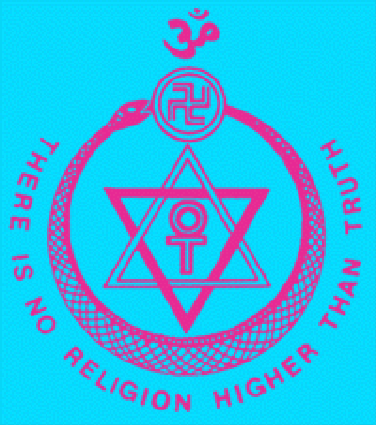
Cardiff
Theosophical Society in
Theosophy
House
206
Newport Road, Cardiff, Wales, UK. CF24 -1DL
Find out
more about
Theosophy
with these links

The Cardiff Theosophical Society Website
The National Wales Theosophy Website
If you
run a Theosophy Group, please feel free
to use any of the
material on this site
The Most Basic Theosophy
Website in the Universe
A quick overview of Theosophy
and the Theosophical Society
If you run a Theosophy Group you
can use this as an introductory handout.
Theosophy Cardiff’s Instant Guide
One liners and quick explanations
H P Blavatsky is
usually the only
Theosophist that
most people have ever
heard of. Let’s put
that right
The Voice of the Silence Website
An Independent Theosophical Republic
Links to Free Online Theosophy
Study Resources; Courses,
Writings,
The main criteria
for the inclusion of
links on this site is
that they have some
relationship (however
tenuous) to Theosophy
and are lightweight,
amusing or entertaining.
Topics include
Quantum Theory and Socks,
Dick Dastardly and Legendary Blues Singers.
A selection of
articles on Reincarnation
Provided in
response to the large
number of enquiries we
receive at
Cardiff
Theosophical Society on this subject
The Voice of the Silence Website
This is for everyone, you don’t have to live
in Wales to make
good use of this Website
No
Aardvarks were harmed in the
The Spiritual Home of Urban Theosophy
The Earth Base for Evolutionary Theosophy
A B C D EFG H IJ KL M N OP QR S T UV WXYZ
Complete Theosophical Glossary in Plain Text Format
1.22MB
________________
Preface
Theosophy and the Masters General Principles
The Earth Chain Body and Astral Body Kama – Desire
Manas Of
Reincarnation Reincarnation Continued
Karma Kama Loka
Devachan
Cycles
Arguments Supporting Reincarnation
Differentiation Of Species Missing Links
Psychic Laws, Forces, and Phenomena
Psychic Phenomena and Spiritualism
Quick Explanations
with Links to More Detailed Info
What is Theosophy
? Theosophy Defined (More Detail)
Three Fundamental Propositions Key Concepts of Theosophy
Cosmogenesis Anthropogenesis Root Races
Ascended Masters After Death States
The Seven Principles of Man Karma
Reincarnation Helena Petrovna Blavatsky
Colonel Henry Steel Olcott William Quan Judge
The Start of the Theosophical
Society
History of the Theosophical
Society
Theosophical Society Presidents
History of the Theosophical
Society in Wales
The Three Objectives of the
Theosophical Society
Explanation of the Theosophical
Society Emblem
The Theosophical Order of
Service (TOS)
Glossaries of Theosophical Terms
Index of
Searchable
Full Text
Versions of
Definitive
Theosophical
Works
H P Blavatsky’s Secret Doctrine
Isis Unveiled by H P Blavatsky
H P Blavatsky’s Esoteric Glossary
Mahatma Letters to A P Sinnett 1 - 25
A Modern Revival of Ancient Wisdom
(Selection of Articles by H P Blavatsky)
The Secret Doctrine – Volume 3
A compilation of H P Blavatsky’s
writings published after her death
Esoteric Christianity or the Lesser Mysteries
The Early Teachings of The
Masters
A Collection of Fugitive Fragments
Fundamentals of the Esoteric Philosophy
Mystical,
Philosophical, Theosophical, Historical
and Scientific Essays Selected from "The
Theosophist"
Edited by George Robert Stow Mead
From Talks on the Path of Occultism - Vol. II
In the Twilight”
Series of Articles
The In the
Twilight” series appeared during
1898 in The Theosophical Review and
from 1909-1913 in The Theosophist.
compiled from information supplied by
her relatives and friends and edited by A P Sinnett
Letters and
Talks on Theosophy and the Theosophical Life
Obras
Teosoficas En Espanol
Theosophische
Schriften Auf Deutsch
An Outstanding
Introduction to Theosophy
By a student of
Katherine Tingley
Elementary Theosophy Who is the Man? Body and Soul
Body, Soul and Spirit Reincarnation Karma
Guide to the
Theosophy
Wales King Arthur Pages
Arthur draws
the Sword from the Stone
The Knights of The Round Table
The Roman Amphitheatre at Caerleon,
Eamont Bridge, Nr Penrith, Cumbria, England.
Geoffrey of Monmouth
(History of the Kings of Britain)
The reliabilty of this work has long been a subject of
debate but it is the first definitive account of Arthur’s
Reign
and one which puts Arthur in a historcal context.
and his version’s political agenda
According to Geoffrey of Monmouth
The first written mention of Arthur as a heroic figure
The British leader who fought twelve battles
King Arthur’s ninth victory at
The Battle of the City of the Legion
King Arthur ambushes an advancing Saxon
army then defeats them at Liddington Castle,
Badbury, Near Swindon, Wiltshire, England.
King Arthur’s twelfth and last victory against the Saxons
Traditionally Arthur’s last battle in which he was
mortally wounded although his side went on to win
No contemporary writings or accounts of his life
but he is placed 50 to 100 years after the accepted
King Arthur period. He refers to Arthur in his inspiring
poems but the earliest written record of these dates
from over three hundred years after Taliesin’s death.
Pendragon Castle
Mallerstang Valley, Nr Kirkby Stephen,
A 12th Century Norman ruin on the site of what is
reputed to have been a stronghold of Uther Pendragon
From wise child with no
earthly father to
Megastar of Arthurian
Legend
History of the Kings of Britain
Drawn from the Stone or received from the Lady of the Lake.
Sir Thomas Malory’s Le Morte d’Arthur has both versions
with both swords called Excalibur. Other versions
5th & 6th Century Timeline of Britain
From the departure of the Romans from
Britain to the establishment of sizeable
Anglo-Saxon Kingdoms
Glossary of
Arthur’s uncle:- The puppet ruler of the Britons
controlled and eventually killed by Vortigern
Amesbury, Wiltshire, England. Circa 450CE
An alleged massacre of Celtic Nobility by the Saxons
History of the Kings of Britain
Athrwys / Arthrwys
King of Ergyng
Circa 618 - 655 CE
Latin: Artorius; English: Arthur
A warrior King born in Gwent and associated with
Caerleon, a possible Camelot. Although over 100 years
later that the accepted Arthur period, the exploits of
Athrwys may have contributed to the King Arthur Legend.
He became King of Ergyng, a kingdom between
Gwent and Brycheiniog (Brecon)
Angles under Ida seized the Celtic Kingdom of
Bernaccia in North East England in 547 CE forcing
Although much later than the accepted King Arthur
period, the events of Morgan Bulc’s 50 year campaign
to regain his kingdom may have contributed to
Old Welsh: Guorthigirn;
Anglo-Saxon: Wyrtgeorn;
Breton: Gurthiern; Modern Welsh; Gwrtheyrn;
*********************************
An earlier ruler than King Arthur and not a heroic figure.
He is credited with policies that weakened Celtic Britain
to a point from which it never recovered.
Although there are no contemporary accounts of
his rule, there is more written evidence for his
existence than of King Arthur.
How Sir Lancelot slew two giants,
From Sir Thomas Malory’s Le Morte d’Arthur
How Sir Lancelot rode disguised
in Sir Kay's harness, and how he
From Sir Thomas Malory’s Le Morte d’Arthur
How Sir Lancelot jousted against
four knights of the Round Table,
From Sir Thomas Malory’s Le Morte d’Arthur
Try
these if you are looking for a local
Theosophy
Group or Centre
UK Listing of Theosophical Groups
Cardiff
Theosophical Society in Wales
206 Newport Road,
Cardiff, Wales, UK. CF24 -1DL
Wales Picture Gallery
Bala
Brecon
Pembroke
Llanidloes
Mold Market
Rhayader
Barmouth
Barmouth
Blorenge Mountain near Abergavenny
Castle Bank Hill Fort, Radnorshire
Cynwyd Youth Hostel
The Harvest Moon Centre, Holyhead
Hay on Wye
Knighton
Llancayo Windmill near Usk
A Nant Y
These were built by the ironmasters in the early
1800s to protect themselves against worker revolts.
Tintern Abbey
Usk
Monmouth
Cardiff
Theosophical Society in Wales
